In March, the Biden Administration launched its Clean Air in Buildings Challenge—an integral piece of the National COVID-19 Preparedness Plan released by the Administration earlier in March, to encourage building owners, schools, colleges and universities, building operators, and organizations to implement practices and strategies that improve indoor air quality (IAQ) and diminish the spread of COVID-19. ABM Read more
COVID-19
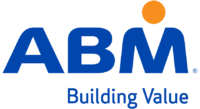
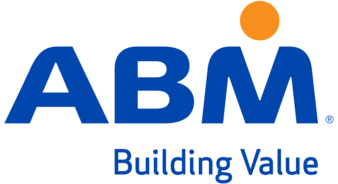 In March, the Biden Administration launched its Clean Air in Buildings Challenge—an integral piece of the National COVID-19 Preparedness Plan released by the Administration earlier in March, to encourage building owners, schools, colleges and universities, building operators, and organizations to implement practices and strategies that improve indoor air quality (IAQ) and diminish the spread of COVID-19. ABM, a leading provider of integrated facility solutions, today announces its enthusiastic support of the new “Clean Air in Buildings Challenge” and continues its commitment to safeguard the places and spaces people occupy every day.
In March, the Biden Administration launched its Clean Air in Buildings Challenge—an integral piece of the National COVID-19 Preparedness Plan released by the Administration earlier in March, to encourage building owners, schools, colleges and universities, building operators, and organizations to implement practices and strategies that improve indoor air quality (IAQ) and diminish the spread of COVID-19. ABM, a leading provider of integrated facility solutions, today announces its enthusiastic support of the new “Clean Air in Buildings Challenge” and continues its commitment to safeguard the places and spaces people occupy every day.
To prepare building owners and operators for the challenge of improving indoor air quality, the Environmental Protection Agency (EPA), in partnership with the Department of Energy (DOE), Centers for Disease Control and Prevention (CDC), and other federal agencies, provided a guide that details the four components of recommendations that include: creating a clean indoor air action plan, optimizing fresh air ventilation, enhancing air filtration and cleaning, and engaging the building community.
Josh Feinberg, Chief Strategy Officer stated, “At ABM, we applaud this action dedicated toward advancing the adoption of crucial indoor air quality guidelines. As we continue to navigate the uncertainty of COVID-19, it’s imperative that effective strategies are implemented to better equip organizational leaders to reduce the spread of the virus, thereby creating healthier spaces for all.”
Since the beginning of the year, states have been steadily removing mask mandates, re-opening facilities at full capacity, and no longer requiring proof of vaccination. As these protective protocols deescalate, there is an opportunity to apply key learnings and improve the health of the air within facilities. The Clean Air in Buildings Challenge, along with efficient standards of enhanced cleaning practices, provide a roadmap for building owners and operators to support the slowing the spread of COVID-19 variants and providing a better overall indoor environment.
Aligning with this objective, ABM continues to execute multipronged integrated facility service solutions for business decision makers and building owners and operators to deploy a holistic approach to facility health.
“Keeping occupants safe through incorporating proper ventilation, mechanical and control systems, along with several new and advanced technologies for biohazard disinfection of the air is critically important. The COVID-19 pandemic thrust a spotlight on the essential responsibility of companies to address the wellbeing of people, and businesses across industries must prioritize improvements to their facilities to achieve proper risk assessment in real-time,” said Nancy M. McClellan, ABM Expert Advisory Council.
Congress, along with the Biden Administration, has allocated hundreds of billions of dollars towards infrastructure investment, including for schools, public buildings, and other facilities to improve indoor air quality by funding upgrades and enhancements to Heating, Ventilation, Filtration, and Air Conditioning (HVAC) systems. ABM is an industry leader in providing EnhancedFacility™ services focused on improving IAQ to foster better occupant wellbeing through improved building health, safety, and efficiency that helps reduce viral transmission.
Please visit abm.com to learn more about ABM’s EnhancedFacility program and services.

Lennox and dealer network complete Feel The Love Week, providing essential heating and cooling equipment and installations to deserving homeowners at no cost. Lennox Industries proudly partnered with HVAC dealers across the U.S. and Canada to install 130 HVAC units in 37 U.S. states and 5 Canadian provinces as part of the company’s Feel The Love program. Selected homeowners Read more
Lennox and dealer network complete Feel The Love Week, providing essential heating and cooling equipment and installations to deserving homeowners at no cost.
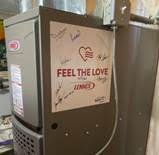 Lennox Industries proudly partnered with HVAC dealers across the U.S. and Canada to install 130 HVAC units in 37 U.S. states and 5 Canadian provinces as part of the company’s Feel The Love program. Selected homeowners received heating and cooling equipment free of charge throughout the second week of October in Lennox’ first, week-long installation event.
Lennox Industries proudly partnered with HVAC dealers across the U.S. and Canada to install 130 HVAC units in 37 U.S. states and 5 Canadian provinces as part of the company’s Feel The Love program. Selected homeowners received heating and cooling equipment free of charge throughout the second week of October in Lennox’ first, week-long installation event.
Each Feel The Love recipient is an unsung hero who may be going through hardship, facing adversity or in need of community support. Recipients were nominated by their neighbors, friends and family members as a way of bringing hope and support to homes across North America. In 2021, Lennox continued to expand the Feel The Love program to honor essential and frontline workers who went above and beyond to keep their communities safe during the COVID-19 pandemic.
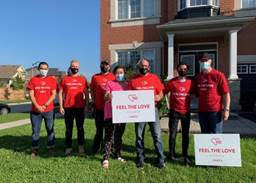 “We greatly appreciate Lennox for choosing us to be a part of this wonderful program,” said Courtney Johnson, Dallas Hope Center’s housing manager and 2021 Feel The Love recipient. “The installation definitely put a lot of smiles on our board members faces, our CEO’s and on mine as the housing manager. There are a lot of things that are needed in the community, and having the organization see those needs and act is very imperative and exciting. I’m very grateful to be a part of it.”
“We greatly appreciate Lennox for choosing us to be a part of this wonderful program,” said Courtney Johnson, Dallas Hope Center’s housing manager and 2021 Feel The Love recipient. “The installation definitely put a lot of smiles on our board members faces, our CEO’s and on mine as the housing manager. There are a lot of things that are needed in the community, and having the organization see those needs and act is very imperative and exciting. I’m very grateful to be a part of it.”
The Feel The Love program is made possible through the ongoing partnership of the Lennox dealer network across North America. Since the inaugural Feel The Love program in 2009, Lennox and its dealers have completed over 1,600 free installations, with 130 installations occurring in 2021 alone. Every donated unit comes complete with 3-year Comfort Shield Labor Protection Plans, and Feel The Love dealers donate their time and labor to make the program a success.
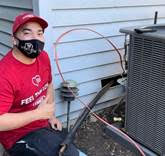 “At Lennox, we believe everyone deserves clean, perfect air, and we’re dedicated to making sure everyone feels safe and comfortable in their own homes,” said Kim McGill, Vice President of Marketing at Lennox Industries. “Through our Feel The Love program, we honor local heroes in the communities where we work and live and are proud to give those in need the perfect air they deserve, thanks to the collaboration and generosity of our dealer partners.”
“At Lennox, we believe everyone deserves clean, perfect air, and we’re dedicated to making sure everyone feels safe and comfortable in their own homes,” said Kim McGill, Vice President of Marketing at Lennox Industries. “Through our Feel The Love program, we honor local heroes in the communities where we work and live and are proud to give those in need the perfect air they deserve, thanks to the collaboration and generosity of our dealer partners.”
For more information about the Feel The Love program and its impact on the community, visit FeelTheLove.com.
About Feel The Love™
Since 2009, Feel The Love (formally known as Heat U.P.) has been a key program for Lennox Industries to give back to its communities. Culminating in Feel The Love Week, Lennox partners with HVAC installers and local community members in the United States and portions of Canada to deliver units at no cost to people who consistently put others before themselves and need a helping hand. For more information about how Lennox is bringing perfect air to deserving households across the United States and Canada, visit FeelTheLove.com.
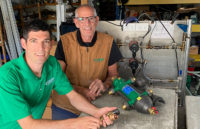
No doubt about it, COVID-19 quickly changed the way we work, and play. Travel and in person visits came to a screeching halt. Professional offices, suppliers, even many working shops closed their doors to visitors. Training in the not to distant past was done, for the most part, in person. Conveniently, most trainers adapted quickly Read more
No doubt about it, COVID-19 quickly changed the way we work, and play. Travel and in person visits came to a screeching halt. Professional offices, suppliers, even many working shops closed their doors to visitors. Training in the not to distant past was done, for the most part, in person. Conveniently, most trainers adapted quickly to offer online training options. Many of the companies in our industry were already familiar with platforms like Go To meeting. This made the switch to virtual training fairly easy for those trainers.
Some trainers I met through the ESCO group devised hybrid virtual training events. With a few cameras, one that would follow you around a room they kept the hands on training available also.
An instructor in front of a piece of equipment would be led through the troubleshooting in real time, clever and almost like being there.

The question remains, what happens going forward in the training world. In some cases offices that made the change to virtual workspaces plan on staying that way. In some larger cities’ that has created office space vacancies and those building owners are scrambling to repurpose those spaces to get the rent rolling back in.
In cities like San Francisco it was a tough slog to see more than two engineering firms in a day due to traffic and parking logistics. With online, virtual sessions you can present to their entire staff as well as any locations they have scattered around the world.
I’ve started limited travel myself for training events. I doubt cramming 30 or more folks into a hotel meeting room will ever be attractive anymore. In some cases moving the training into the shop area, parking lot or a large cafeteria area is a good option to allow attendees to spread out more.
I doubt anyone knows for sure how this will shake out or what “bug” will hit us next that makes people want to avoid crowded rooms and spaces, but plan on having options. Come up with new ways to engage the attendees. Not being able to see faces, expressions and not getting that in person feedback changes the game for a trainer. Add polls to your training to get some interaction and a feel for the groups. Consider multiple speakers or trainers to get some back and forth conversation in your online trainings.
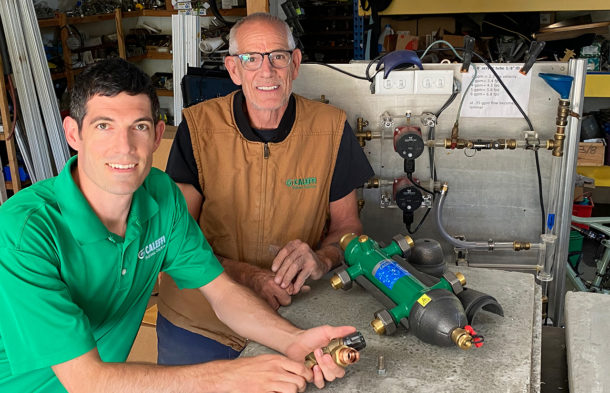
The need for having a trained workforce is critical. Equipment is becoming more sophisticated and specific, so factory training will march forward. We would love to hear from all the players in the industry, thoughts suggestions, what we can do to keep you’ all coming back.
Let’s rid the ‘VID and get back to the normal face to face that we all crave.
After a challenging year resulting from the global pandemic that hit full force in March 2020, the Plumbing-Heating-Cooling Contractors—National Association (PHCC) reports that – one year later – there are signs that conditions are improving. A contractor sentiment survey conducted by PHCC finds that 84% of respondents rank the continuing impact of COVID-19 on their Read more
After a challenging year resulting from the global pandemic that hit full force in March 2020, the Plumbing-Heating-Cooling Contractors—National Association (PHCC) reports that – one year later – there are signs that conditions are improving.
A contractor sentiment survey conducted by PHCC finds that 84% of respondents rank the continuing impact of COVID-19 on their businesses as having either a “low” or “medium” impact compared to 57% in spring 2020, when PHCC first began tracking trends during the pandemic. In addition, the number of people ranking impact as “medium high” to “high” has dropped to 9% from 43% in spring 2020.
“A year after COVID-19 hit, PHCC members indicate that they are cautiously optimistic that we are turning a corner toward better times ahead,” says PHCC President Hunter Botto. “Respondents also noted that their businesses have stabilized after several difficult months of disruption. They also see new business opportunities in the future, which is very good news for our industry.”
In fact, an annual environmental scan conducted by PHCC in January 2021 predicted an increased demand for home improvement spending; touchless products; upgraded and energy efficient equipment; smart technology; air and water filtration and purification; and IAQ markets, including UV and bipolar ionization.
While the overall outlook is positive, the plumbing and HVACR contractors responding to the sentiment survey cite several ongoing challenges, including maintaining a safe and fully operational staff; increased operating costs related to new safety requirements; addressing employee and customer health and safety concerns; customer delays on projects because of economic concerns; disruptions in the supply channel; and a fear of a potential recession.
Regarding manufacturers and suppliers’ responsiveness to supply chain issues, respondents noted many have been helpful by offering creative alternatives to products currently unavailable. There was an overall recognition that manufacturers and suppliers are also facing material cost increases and shortages, transportation challenges, workforce issues, etc. “They have been super helpful, but have had their own people issues, concerns and interruptions,” one contractor said.
Contractors indicate they have established many safety procedures to mitigate safety risks for employees and clients, including employee screening, social distancing, disinfection measures, increased communication about safety protocols and requirements for Personal Protective Equipment.
“As we look back on the last year, PHCC members – operating as essential businesses – illustrated time and time again that they are true professionals committed to keeping their employees, customers and communities healthy and safe,” Botto says. “As always, our members have shown they are extremely resilient in tough times.”
Another positive indicator is that – after recently completing its annual membership renewal process this spring – PHCC realized an increase in both renewing and new members.
“We are grateful for the loyalty demonstrated by our members throughout this crisis,” Botto says. “We are also excited to see growth in membership when business owners are assessing the ROI on every expenditure. Now more than ever, they can see the value of supporting and engaging with their association.”
To help navigate the many unexpected changes they faced, members relied on PHCC resources and videos via its COVID-19 Recovery Center, as well as monthly webinars, state and local support, advocacy, member discounts and access to Personal Protective Equipment.
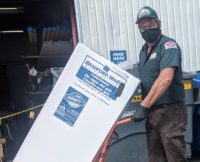
It’s that time of year again where media, prognosticators and media prognosticators try to look into the immediate future to predict, and make sense of, the short-term economy. And, yes, even in this uncertain climate. According to the Air-Conditioning, Heating & Refrigeration Institute (AHRI), U.S. shipments of residential gas storage water heaters for January 2021 Read more
It’s that time of year again where media, prognosticators and media prognosticators try to look into the immediate future to predict, and make sense of, the short-term economy. And, yes, even in this uncertain climate.
According to the Air-Conditioning, Heating & Refrigeration Institute (AHRI), U.S. shipments of residential gas storage water heaters for January 2021 increased 3.4 percent to 397,342 units, up from 384,213 units shipped in January 2020. Residential electric storage water heater shipment saw a 2.4 percent increase in January 2021 to 395,640 units, up from 386,291 units shipped in January 2020.
Commercial gas storage water heater shipments decreased 7.8 percent in January 2021 to 6,642 units, down from 7,207 units shipped in January 2020. Commercial electric storage water heater shipments decreased 7 percent in January 2021 to 11,737 units, down from 12,626 units shipped in January 2020.
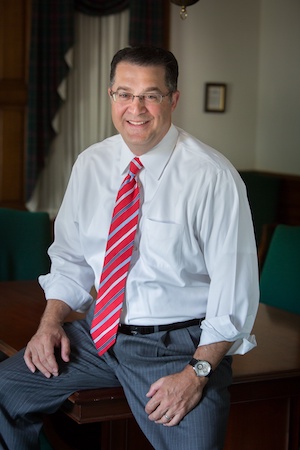 Having said all of that, Mechanical Hub decided to go right to the source to get an up-close sense of how the market is faring. We continue our Forecast Series with Bruce Carnevale, president & CEO, Bradford White.
Having said all of that, Mechanical Hub decided to go right to the source to get an up-close sense of how the market is faring. We continue our Forecast Series with Bruce Carnevale, president & CEO, Bradford White.
MH: When it comes to 2021 industry forecasts, the most resonant word I hear is optimistic. That word can become hollow if it doesn’t have any substance backing it up. I’ve read reports that residential service repair and remodel may remain constant with a slight increase in early 2021. What does the short-term economy look like as it relates to BW?
CARNEVALE: In a word, challenging. While demand for our core residential products remains strong, material and labor costs have risen substantially. Labor availability for manufacturers is still a significant problem and has been exacerbated by COVID-19 complications and government policies. Steel prices are at or near all time highs, and supply is becoming an issue for some manufacturers. These factors lead to longer lead times, higher prices to the end user, and product shortages.
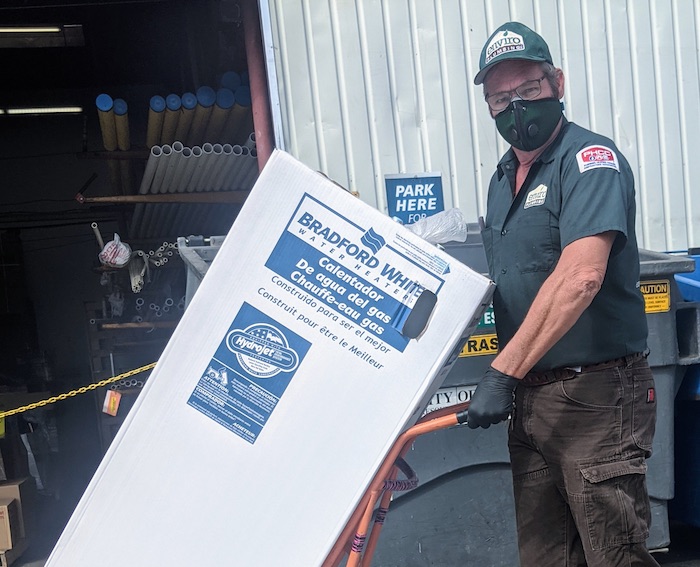
We know intuitively that the “nesting” effect has led to increased demand because household appliances are being use much more that they normally would be. There is no good data on magnitude of the increased demand, nor how long it will last.
Commercial demand has recovered slightly, but with commercial businesses still in some state of shutdown in much of the country, we don’t see that segment starting to recover until the second half of 2021. It is unlikely that the commercial segment will fully recover to pre-pandemic levels until after 2022 because so many businesses will permanently shut down as a result of the pandemic-forced shutdowns.
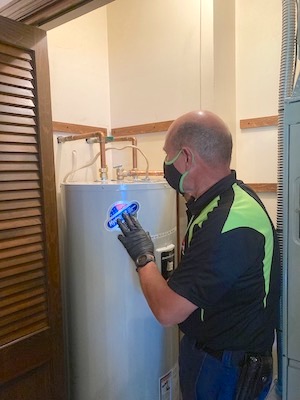 MH: What are some indicators you look at to determine trends, movements, etc.?
MH: What are some indicators you look at to determine trends, movements, etc.?
CARNEVALE: We look at traditional indicators such as housing starts re-sales, mortgage rates, CPI, consumer confidence, manufacturing output and inventories, unemployment rates, etc. Several years ago, we incorporated student loan debt into our analyses since it has such a significant impact on first time homebuyers. Additionally, we closely follow regulations and all levels and social preferences to determine their impact on product trends.
MH: I read somewhere that at the rate the U.S. is distributing the vaccine, we should be back to “normal” by 2024. Perhaps that’s a bit overly dramatic, but how does (has) BW positioned itself from the “fallout” of COVID-19?
The honest answer is that nobody really knows when we will be back to normal. Even after we are, there will be lasting effects from the pandemic. We are following the data and trends closely and adjusting our strategy accordingly. We expect some pre-pandemic trends to change significantly. For example, the trend toward urbanization will change as more people are able to work from home. This leads us to believe that the housing new construction will shift away from multifamily towards single family as people can move further out from cities.
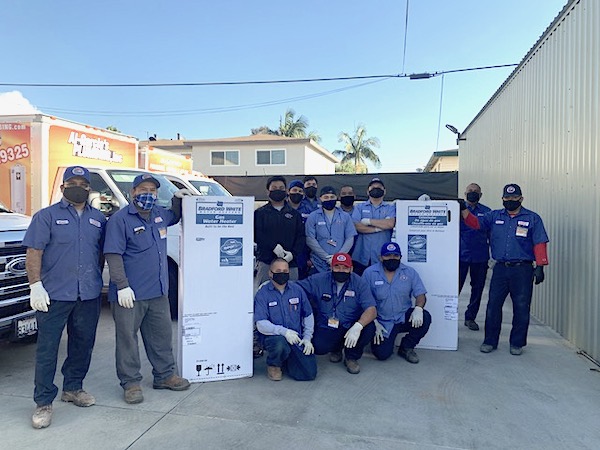
Additionally, we are solidifying supply chain and strengthening our contingency plans, further developing our own work force, and investing significantly in R&D to bring relevant, innovative products to the post-pandemic market.
MH: Is the only certainty heading into early 2021 uncertainty? How do you forecast and budget for such uncertainty? (Or is it fairly certain at this point during the pandemic?)
CARNEVALE: Uncertainty has made forecasting for 2021 is as much art as it is science. We used an immense amount of data, both historical and forward-looking, and applied significantly more assumptions than we typically would. We also included insights derived from some original research projects we commissioned.
MH: Without getting overly political, does a change at the presidential level (and congress) change the outlook for your company, if at all? (Infrastructure, regulations, green energy initiatives, etc.)
CARNEVALE: Yes. It is no secret that the Biden administration will have a very different policy positions than the Trump administration. Some of the expected changes may be helpful, and others will present challenges. Infrastructure legislation, for example, will be good for our industry. We know there will be a focus on green energy initiatives, and that too can be good for our industry if they are thoughtfully applied. The regulatory environment will become more challenging, but we are hopeful that the new administration will partner with manufacturers in developing new regulations.
